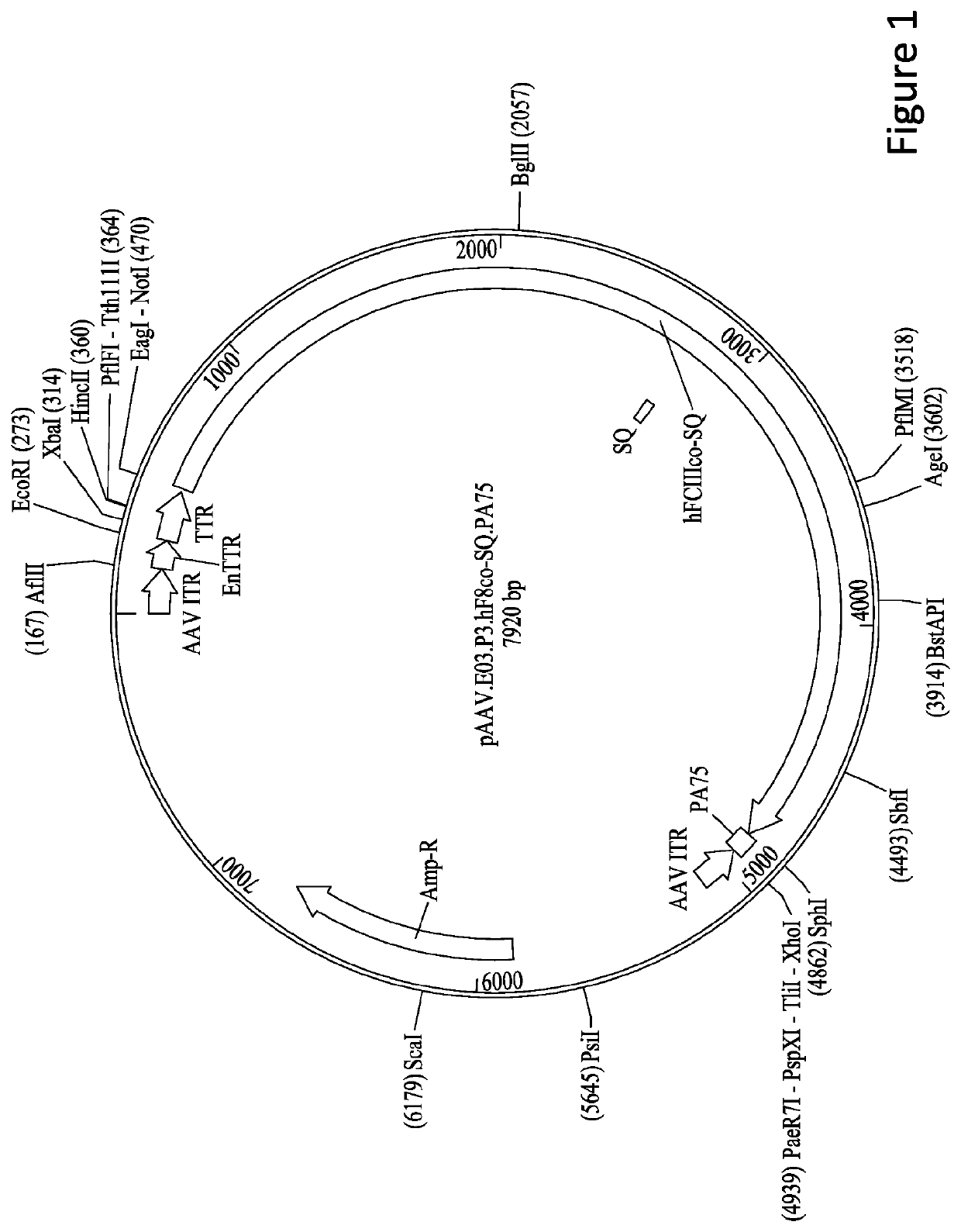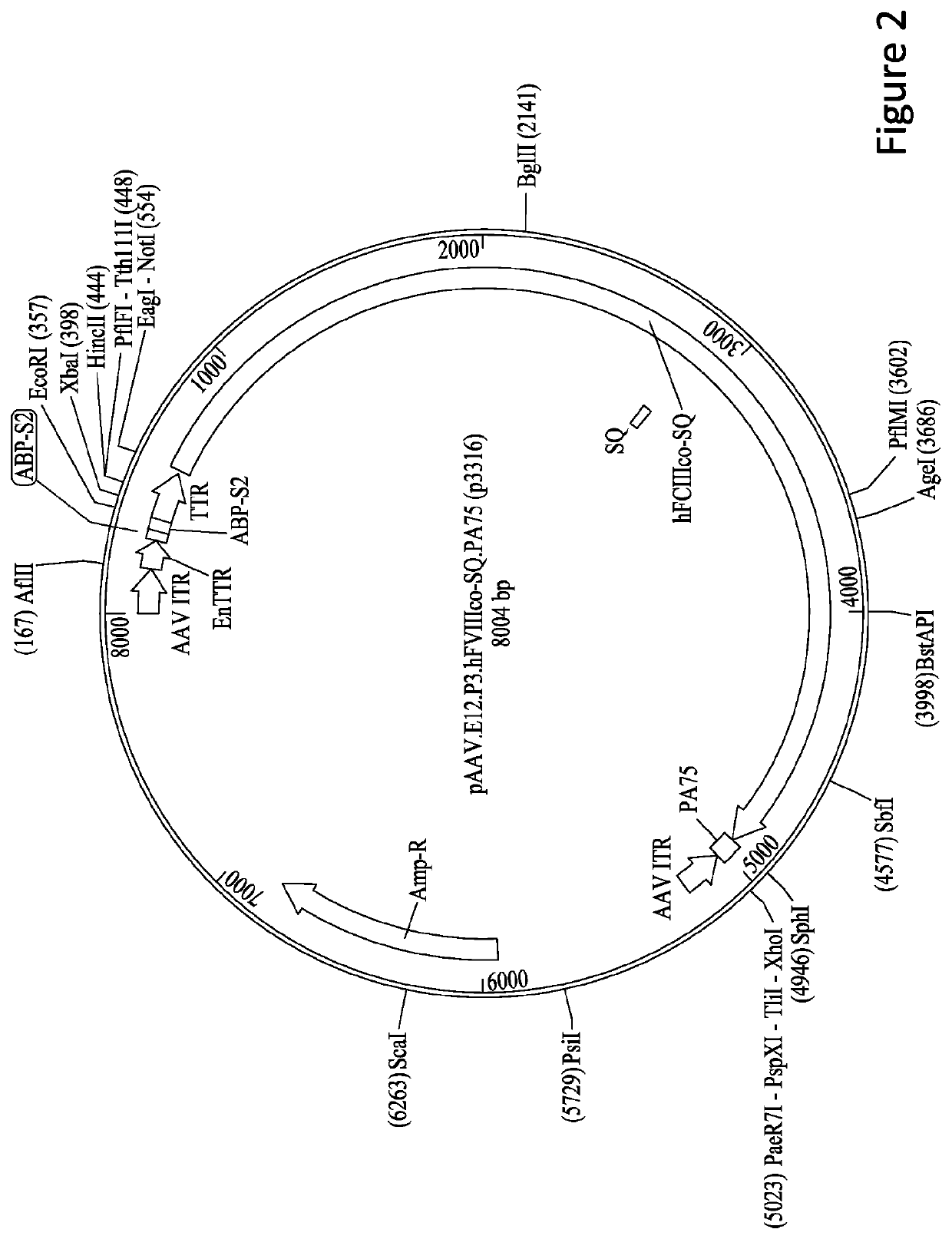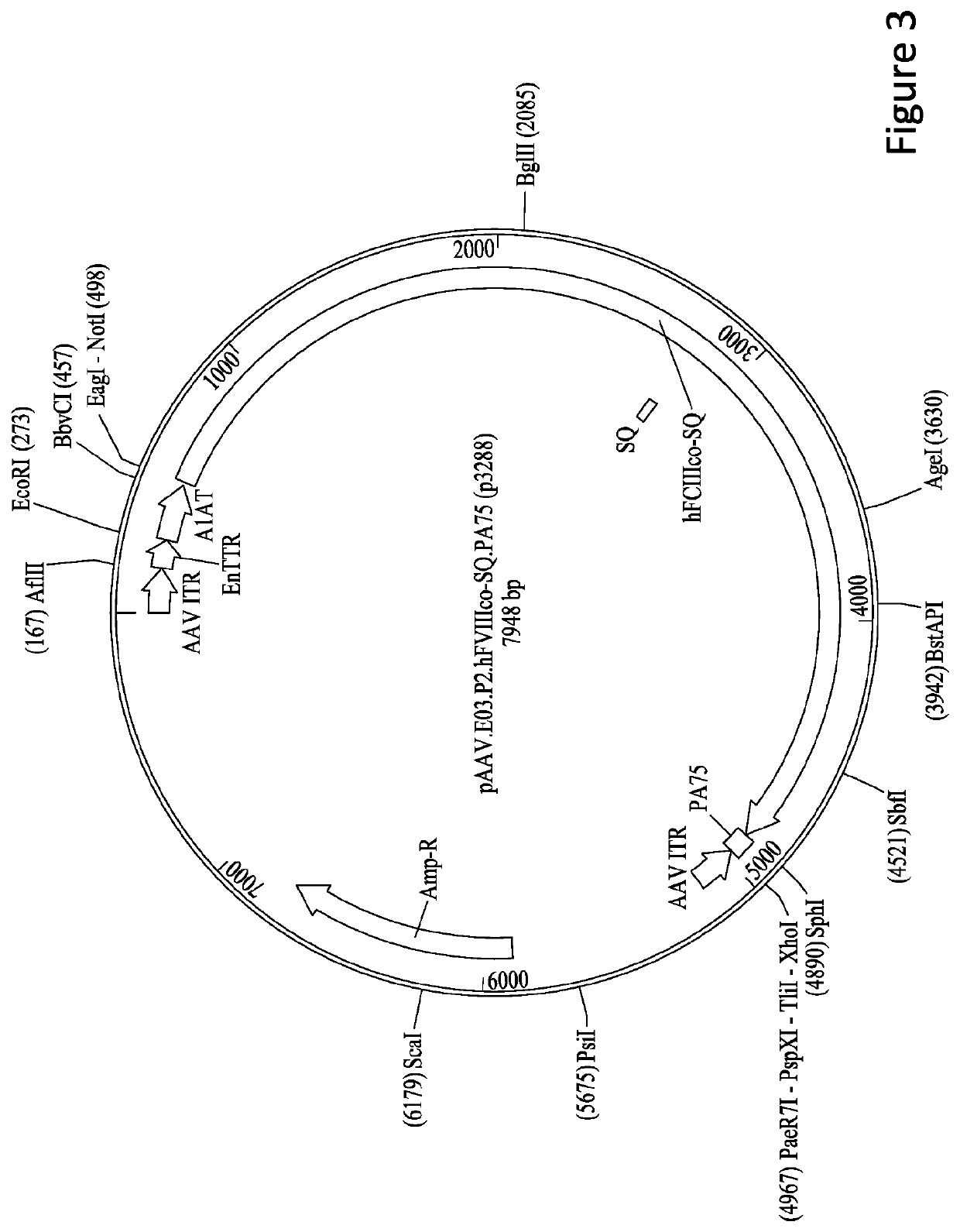Gene therapy for treating hemophilia a
a gene therapy and hemophilia technology, applied in the field of gene therapy for treating hemophilia a, can solve the problems of high cost, high cost, and large size of fviii coding sequence, and achieve the effect of improving the response to current therapies and safe delivery of efficacious doses
- Summary
- Abstract
- Description
- Claims
- Application Information
AI Technical Summary
Benefits of technology
Problems solved by technology
Method used
Image
Examples
example 1
6. EXAMPLE 1
Preclinical Testing
[0136]6.1 hFVIII Vector
[0137]Unlike human factor FIX (hFIX), the cDNA for hFVIII is much larger and adjustments need to be made to fit this transgene into the standard AAV genome. As the B Domain Deleted (BDD) hFVIII transgene is 1457 amino acids and with the inclusion of other necessary elements for transcription, an AAV vector is still at the limit of its packing capacity. Therefore, steps have been taken to reduce the size of the other elements, including the transgene expression control elements.
[0138]In order to restrict expression of hFVIII to the liver while keeping the size of the elements as small as possible several strong liver-specific promoters were shortened and combined, with combinations of up to three liver-specific enhancer sequences, to generate 42 enhancer / promoter combinations. hFVIII activity and immunogenicity of the transgene were evaluated in FVIII KO mice following administration of AAV vectors.
[0139]6.1.1 AAV Vector Productio...
example 2
7. EXAMPLE 2
Protocol for Treating Human Subjects
[0199]This Example relates to a gene therapy treatment for patients with genetically confirmed X-linked hemophilia A due to mutations in the clotting factor 8 (FVIII) gene. In this example, the gene therapy vector, AAVhu.37.hFVIII, a replication deficient adeno-associated viral vector hu.37 (AAVhu.37) expressing hFVIII is administered to patients with hemophilia A. Efficacy of treatment can be assessed using FVIII levels as a surrogate for transgene expression. Primary efficacy assessments include FVIII levels at about 12 weeks post treatment, with persistence of effect followed thereafter for at least 1 year. Long term safety and persistence of transgene expression may be measured post-treatment in liver biopsy samples.
[0200]7.1. Gene Therapy Vector—AAV.hFVIII
[0201]7.1.1. AAVhu.37.hFVIII
[0202]The AAVhu.37.hFVIII vector consists of the AAV vector active ingredient and a formulation buffer. The external AAV vector component is a serotyp...
example 3
8. EXAMPLE 3
Manufacture of AAV.hFVIII
[0231]8.1. Plasmids Used to Produce AAV.hFVIII
[0232]AAVrh.10.hFVIII is produced by 3 plasmid DNA transfection of human HEK 293 MCB cells with:
[0233](i) a vector plasmid as described in Section 8.2.1.1-8.2.1.4
[0234](ii) an AAV helper plasmid termed pAAV2.rh10.KanR containing the AAV rep2 and cap rh10 wild-type genes described in Section 8.2.2.1 and
[0235](iii) a helper adenovirus plasmid termed pAdDeltaF6(Kan) described in Section 8.2.3
[0236]AAVhu.37.hFVIII is produced by 3 plasmid DNA transfection of human HEK 293 MCB cells with:
[0237](i) a vector plasmid as described in Section 8.2.1.1-8.2.1.4
[0238](ii) an AAV helper plasmid termed pAAV2.hu.37.KanR containing the AAV rep2 and cap hu.37 wild-type genes described in Section 8.2.2.2 and
[0239](iii) a helper adenovirus plasmid termed pAdDeltaF6(Kan) described in Section 8.2.3
[0240]8.2.1 Cis Plasmids (Vector Genome Expression Construct):
[0241]8.2.1.1 pAAV.E03.p3.hF8co-SQ.PA75 containing the human FVIII...
PUM
| Property | Measurement | Unit |
|---|---|---|
| Length | aaaaa | aaaaa |
| Time | aaaaa | aaaaa |
| Size | aaaaa | aaaaa |
Abstract
Description
Claims
Application Information
 Login to View More
Login to View More - R&D
- Intellectual Property
- Life Sciences
- Materials
- Tech Scout
- Unparalleled Data Quality
- Higher Quality Content
- 60% Fewer Hallucinations
Browse by: Latest US Patents, China's latest patents, Technical Efficacy Thesaurus, Application Domain, Technology Topic, Popular Technical Reports.
© 2025 PatSnap. All rights reserved.Legal|Privacy policy|Modern Slavery Act Transparency Statement|Sitemap|About US| Contact US: help@patsnap.com



